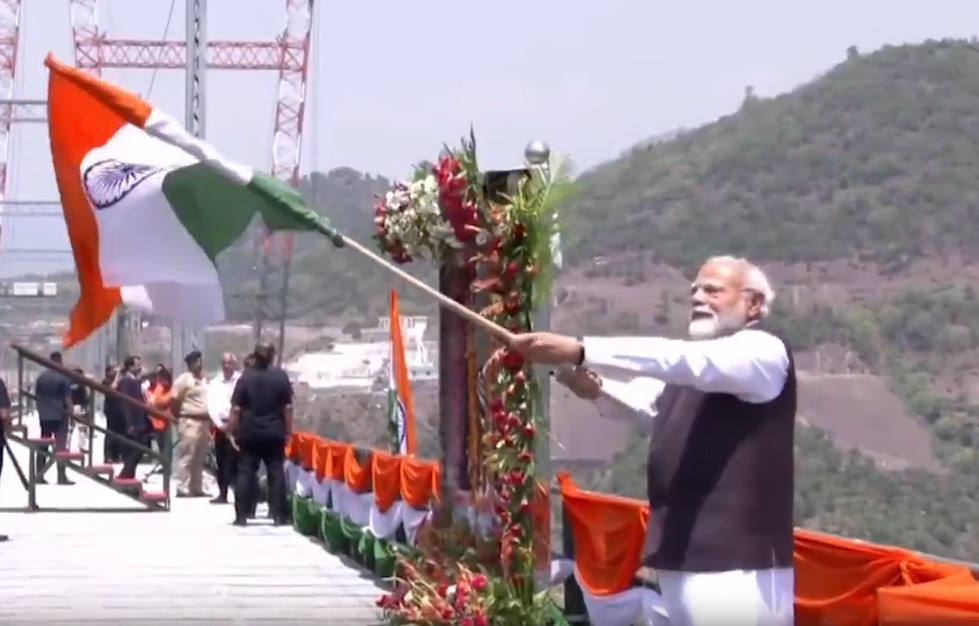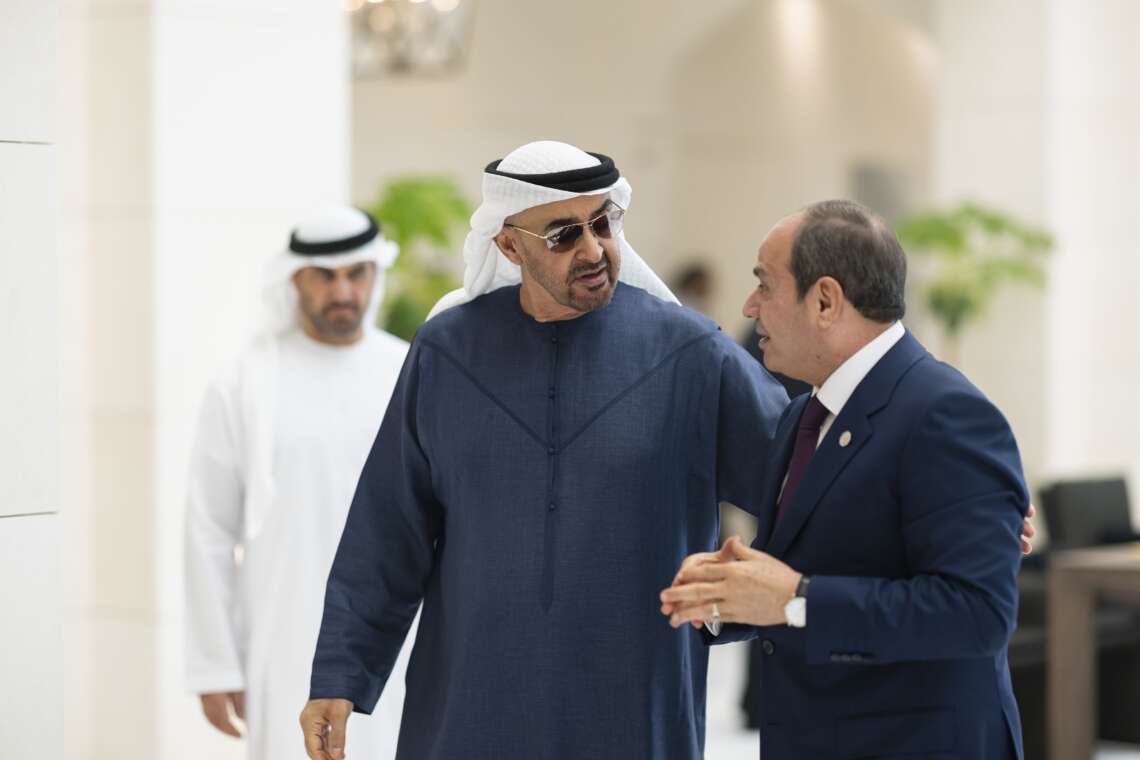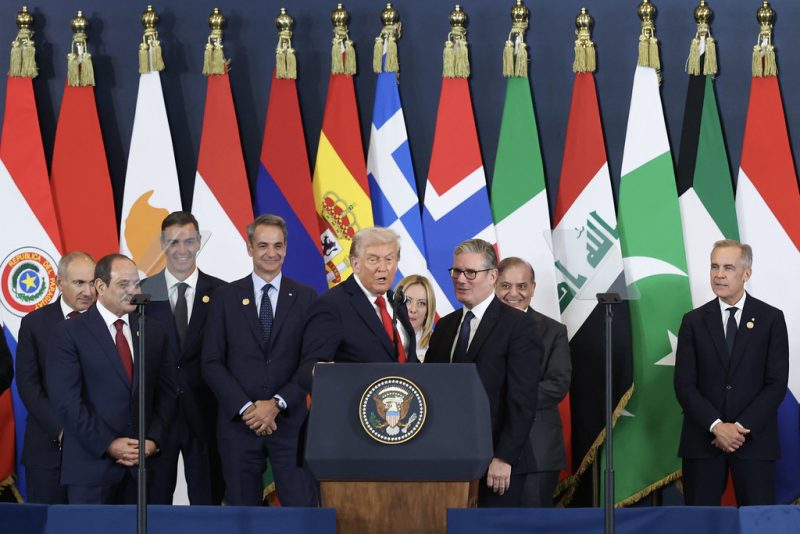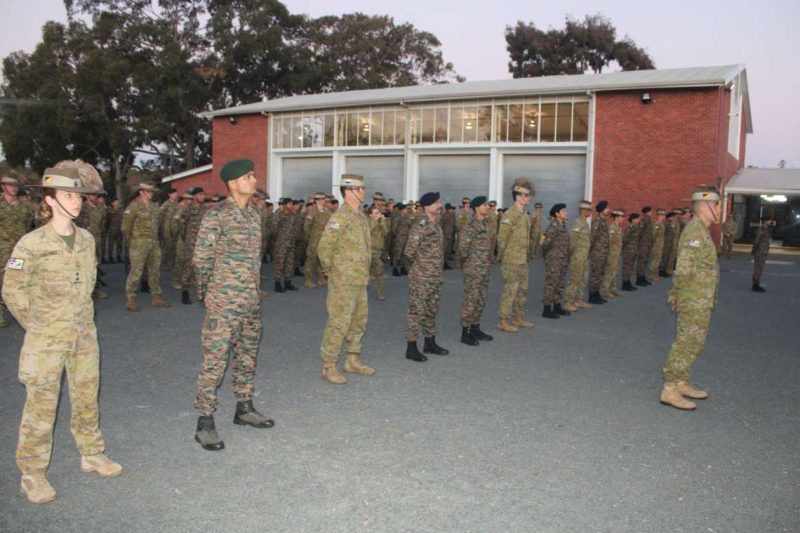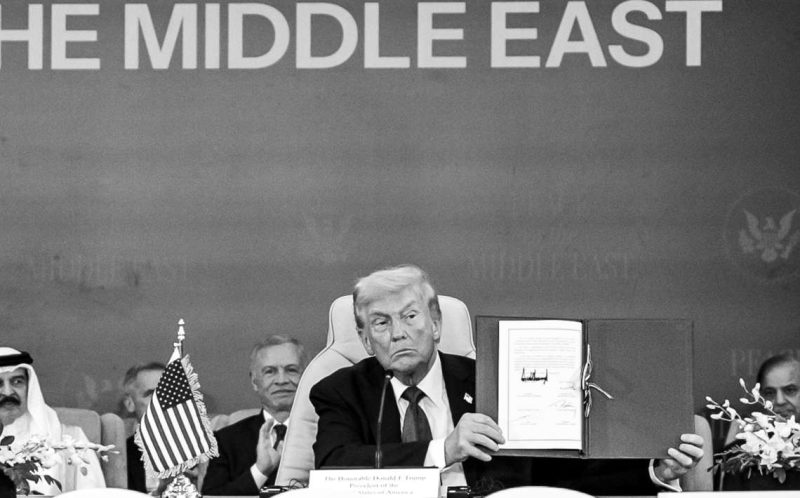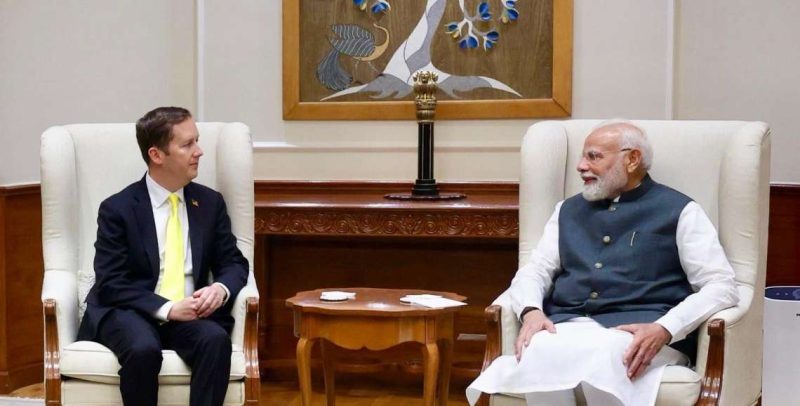Prime Minister Narendra Modi inaugurated the world’s highest railway bridge over the Chenab River in Jammu and Kashmir and flagged off the much-awaited Vande Bharat Express to Srinagar, marking a historic moment for the region’s infrastructure and national connectivity.
Built at a towering height of 359 metres — 35 metres taller than the Eiffel Tower — the Chenab Railway Bridge is an engineering marvel set to revolutionise access to the Kashmir Valley. As part of a two-day tour of the union territory, PM Modi also launched a series of other major infrastructure projects worth over ₹46,000 crore.
In a powerful visual moment, the Prime Minister walked across the newly completed bridge while waving the Tiranga, a symbolic assertion of India’s unity and resolve just weeks after the deadly terror attack in Pahalgam. The gesture was widely viewed as a strong message of resilience to those behind the April 22 assault, and a reaffirmation of the government’s commitment to peace and development in the region.
“Engineering excellence, national pride”
Addressing engineers and workers who constructed the Chenab Bridge under extreme terrain and harsh weather conditions, PM Modi said, “This bridge is not just a symbol of connectivity but a testament to India’s engineering might and the indomitable spirit of our workforce.”

The Chenab Bridge, a steel arch structure stretching 1,315 metres, has been designed to withstand earthquakes, strong winds, and extreme winter temperatures. It links Bakkal (Katra) and Kauri (Srinagar) and is the linchpin in the ambitious Udhampur-Srinagar-Baramulla Railway Line (USBRL) project, which aims to provide year-round rail connectivity to Kashmir.
The Prime Minister also inaugurated the Anji Khad Bridge, India’s first cable-stayed railway bridge, further highlighting the technological prowess now deployed in the region’s rail network. The Anji Khad structure spans 473 metres and connects Katra to Reasi, overcoming a critical engineering challenge in the rugged terrain.
During his visit, PM Modi viewed a special photo exhibition detailing the construction challenges faced during the bridge’s completion. He spent time interacting with the project’s engineers and skilled workers, thanking them for their resilience and excellence.
Mechanised railways, modern dreams
Officials briefed PM Modi on the fully mechanised maintenance model for the Katra–Srinagar railway line, making it India’s first such track and among the safest in the country. Satish Kumar, CEO of the Railway Board, accompanied the Prime Minister and offered a technical overview of the project’s scope and operations.

Later in the day, the Prime Minister travelled to Katra, the base camp town of the Mata Vaishno Devi shrine, to flag off two Vande Bharat Express trains — one physically from Katra to Srinagar, and another virtually from Srinagar to Katra. The electric train service, equipped with weather-proof features suitable for Kashmir’s varied climate, is expected to significantly cut travel time and boost tourism in the Valley.
PM Modi interacted with school children aboard the train and took their feedback before flagging it off. “This train represents a new chapter of modern connectivity, comfort, and speed for the people of Jammu and Kashmir,” he said.
The launch event was attended by Lieutenant Governor Manoj Sinha, Union Railway Minister Ashwini Vaishnaw, Minister of State in the PMO Dr Jitendra Singh, and J&K Chief Minister Omar Abdullah.
Symbol of unity, signal to adversaries
Apart from infrastructure significance, the PM’s visit carried a message of political and emotional reassurance. By personally inaugurating a project that physically connects Kashmir to the rest of India and by publicly expressing solidarity through the waving of the national flag, the Prime Minister sent a direct signal to both terror elements and neighbouring Pakistan — India will not be deterred.
With the launch of the Vande Bharat trains, the unveiling of the Chenab and Anji Khad bridges, and announcements of ₹46,000 crore worth of projects — including road, health, and educational infrastructure — the visit is being seen as one of the most consequential in recent years for the Union Territory.


